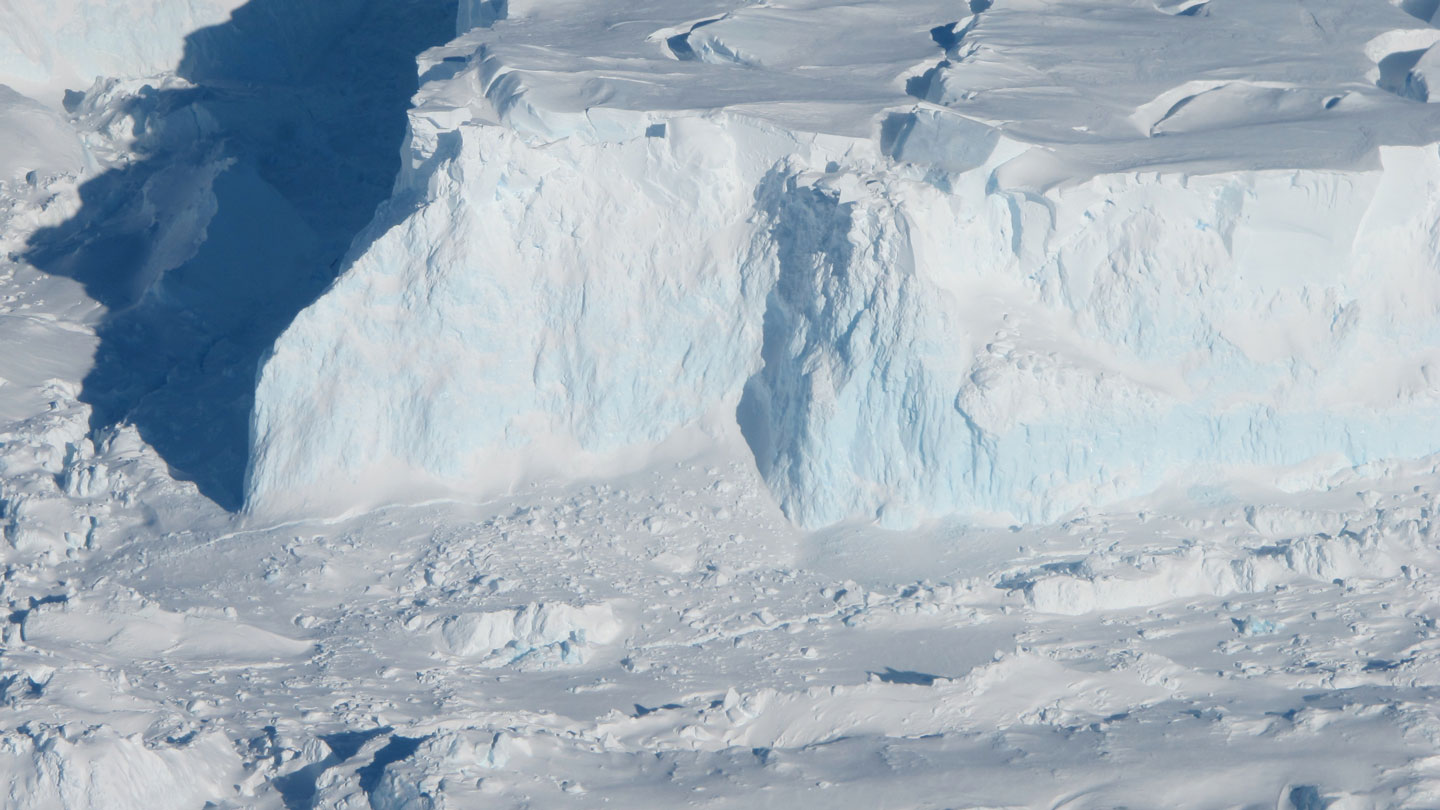Antarctica’s Thwaites Glacier ice shelf could collapse within five years
The demise of a West Antarctic glacier poses the world’s biggest threat to rais

The demise of a West Antarctic glacier poses the world’s biggest threat to raise sea levels before 2100 — and an ice shelf that’s holding it back from the sea could collapse within three to five years, scientists reported December 13 at the American Geophysical Union’s fall meeting in New Orleans.
Thwaites Glacier is “one of the largest, highest glaciers in Antarctica — it’s huge,” Ted Scambos, a glaciologist at the Boulder, Colo.–based Cooperative Institute for Research in Environmental Sciences, told reporters. Spanning 120 kilometers across, the glacier is roughly the size of Florida, and were the whole thing to fall into the ocean, it would raise sea levels by 65 centimeters, or more than two feet. Right now, its melting is responsible for about 4 percent of global sea level rise.
But a large portion of the glacier is about to lose its tenuous grip on the seafloor, and that will dramatically speed up its seaward slide, the researchers said. Since about 2004, the eastern third of Thwaites has been braced by a floating ice shelf, an extension of the glacier that juts out into the sea. Right now, the underbelly of that ice shelf is lodged against an underwater mountain located about 50 kilometers offshore. That pinning point is essentially helping to hold the whole mass of ice in place.
But data collected by researchers beneath and around the shelf in the last two years suggests that brace won’t hold much longer. Warm ocean waters are inexorably eating away at the ice from below (SN: 4/9/21; SN: 9/9/20). As the glacier’s ice shelf loses mass, it’s retreating inland, and will eventually retreat completely behind the underwater mountain pinning it in place. Meanwhile, fractures and crevasses, widened by these waters, are swiftly snaking through the ice like cracks in a car’s windshield, shattering and weakening it.
As Thwaites and other glaciers retreat inland, some scientists have pondered whether they might form very tall cliffs of ice along the edge of the ocean — and the potential tumble of such massive blocks of ice into the sea could lead to devastatingly rapid sea level rise, a hypothesis known as marine ice cliff instability (SN: 2/6/19). How likely researchers say such a collapse is depends on our understanding of the physics and dynamics of ice behavior, something about which scientists have historically known very little (SN: 9/23/20).
The Thwaites collaboration is also tackling this problem. In simulations of the further retreat of Thwaites, glaciologist Anna Crawford of the University of St. Andrews in Scotland and her colleagues found that if the shape of the land beneath the glacier dips deep enough in some places, that could lead to some very tall ice cliffs — but, they found, the ice itself might also deform and thin enough to make tall ice cliff formation difficult.
The collaboration is only at its halfway point now, but these data already promise to help scientists better estimate the near-term future of Thwaites, including how quickly and dramatically it might fall, Scambos said. “We’re watching a world that’s doing things we haven’t really seen before, because we’re pushing on the climate extremely rapidly with carbon dioxide emissions,” he added. “It’s daunting.”
Tags:Glacier,Antarctica,Thwaites,




